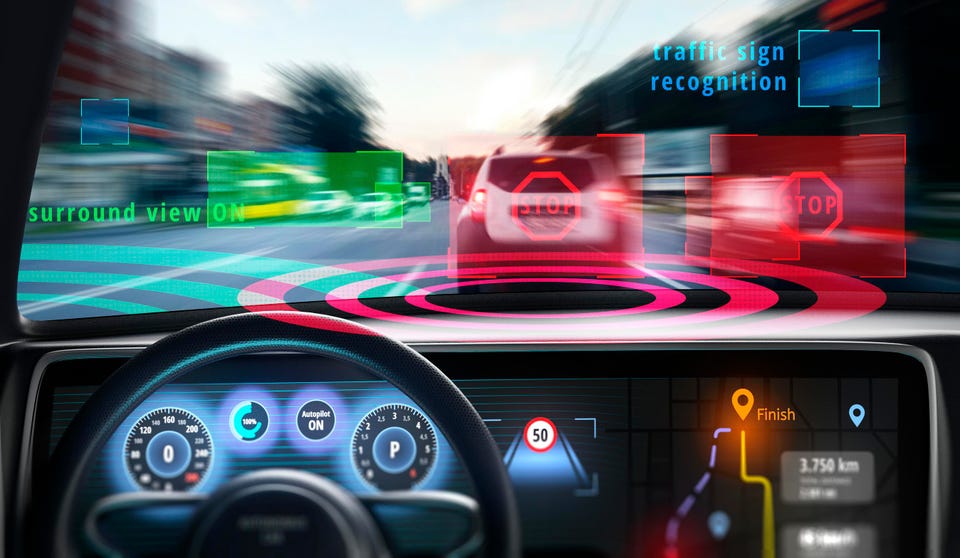Tesla’s Full Self Driving Isn’t The Only Technology With Speed Sign Detection Problems


Last week we woke up to the news that Tesla’s Full Self Driving product was being recalled due to problems, including ignoring the speed limit. Speed limiting technology has also been mandated over in Europe, where the EU’s Vehicle General Safety Regulation has now been in force for a little over 6 months. It introduced a range of mandatory advanced driver assistant systems to all new cars aiming to improve road safety, and establishes the legal framework for the approval of automated and fully driverless vehicles in the EU. The new safety measures will help to better protect passengers, pedestrians and cyclists across the EU, expectedly saving over 25,000 lives and avoid at least 140,000 serious injuries by 2038. The 2019/2044 regulation also mandates all new cars that have already launched be fitted with an Intelligent Speed Assist (ISA) by 7 July 2024. Tesla’s struggles though help to demonstrate how difficult it is to get this technology working in practise.
ISA is designed to inform the driver when they are speeding and reduce the speed of the vehicle. The car determines the current speed limit by either reading road signs with a camera, or by determining the speed limit using GPS and a stored database of roads. ISA then notifies a speeding driver using visual cues, audio cues or by vibrating the pedals under the driver’s feet , warning the driver that they have exceeded the speed limit. If the speed is not subsequently reduced the system can reduce the engine power to slow the vehicle. Tesla’s user manual suggests that the same technologies are in play for it’s speed limiting capabilities, as it cites poor GPS positioning and poor lighting/weather as both being causes of incorrectly detected speed limits. Teslas challenges last week demonstrate the difficulties that lie ahead for ISA.
Machine vision is generally not as reliable as human vision when context and complex environments are important. For example small speed restriction signs on the back of trucks, indicating their maximum speed, could be misread by ISA cameras as the current road speed. Scientific studies have also demonstrated how small changes to speed signs, such as the application of relative benign stickers or marks, can result in machine learning systems mis-labelling road signs when humans would still recognise the correct sign. Similarly, GPS positioning accuracy can be poor in urban environments where signals are blocked and reflected, leading to an ISA system believing it is on, for example; a 30 mph side road when it is really on a 50 mph main road, or vice versa.
What causes these GPS inaccuracies? Satellite positioning is a line-of-sight technology, where the signal’s flight time is used to calculate the distance from the satellite, and then in combination with other satellite distance, the 3D position is determined. This works perfectly when the satellite signal is unobstructed and the signals travel in a straight line, but if they have bounced off buildings to reach you, then the distance calculated will be too long, and the position estimate will be wrong. This is the biggest cause of poor GPS accuracy in cities, where errors can be anywhere between ten yards and a hundred yards, or worse, which can mean catastrophic results for drivers whose vehicle safety with ISA is dependent on accurate positioning.
Solutions to these issues lie in the need for significant improvements to these technologies. Machine vision systems will need to extend beyond simple number recognition and include the wide context of the scene – is the speed sign mounted to and moving with another vehicle? Is the speed sign in the immediate proximity of the current carriageway, or is it actually connected to a neighbouring, or branching one? And is the GPS receiver returning a high or low integrity or accuracy score? What is the error associated with the position fix provided? Is the signal a line-of-sight one, or not? Ideally the two primary detection systems should be checked against a third, perhaps the detection and monitoring of the speeds of the surrounding vehicles, to provide a voting system or an aggregate estimate of the speed limit of the carriageway in use.
Whilst the imperative to reduce incidents is sound, speed limiters will create potentially dangerous situations when they return an incorrect limit. To provide their intended benefit they will need to be reliable and trusted by their users. More robust software and testing to higher standards will both be required to ensure that our self-driving cars can stick to the speed limits.
